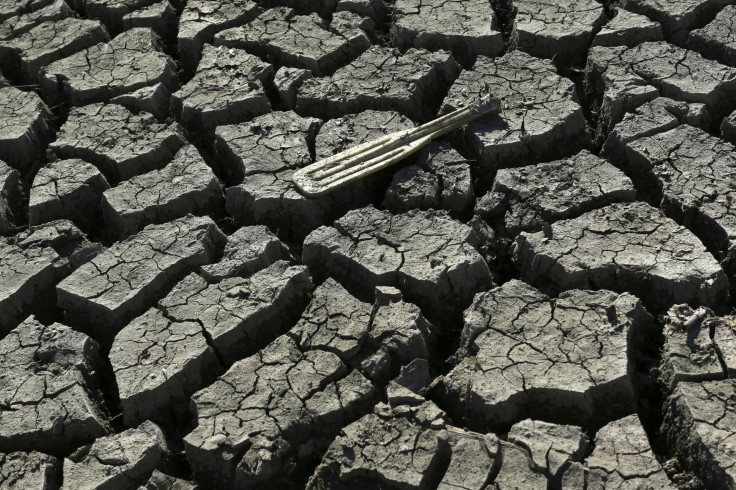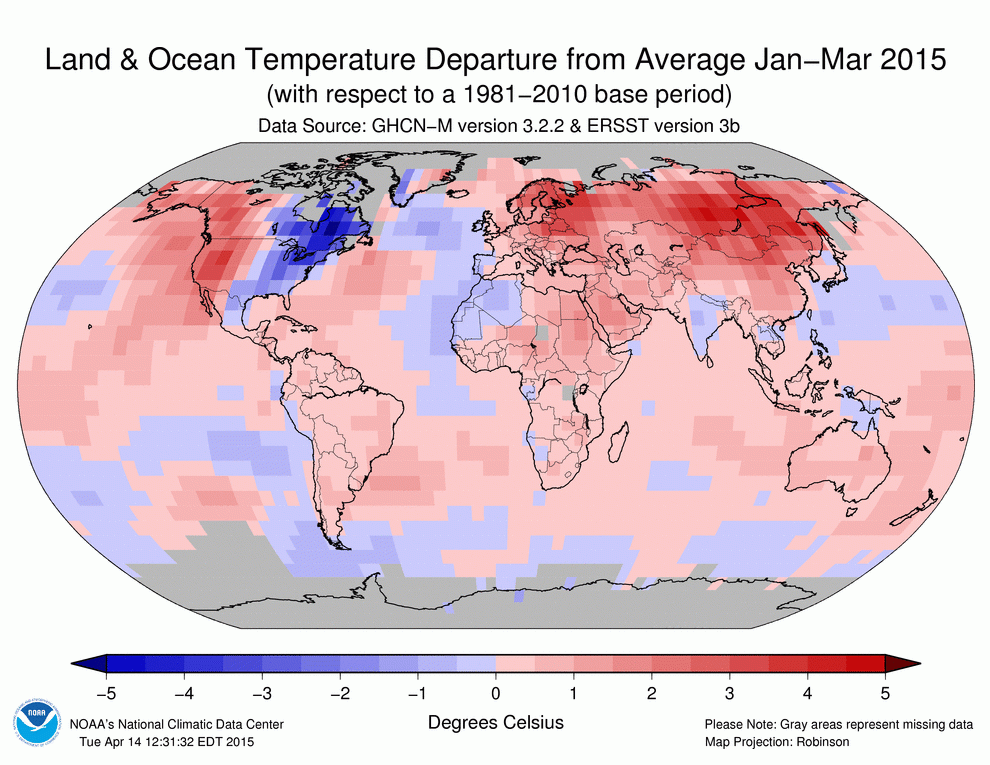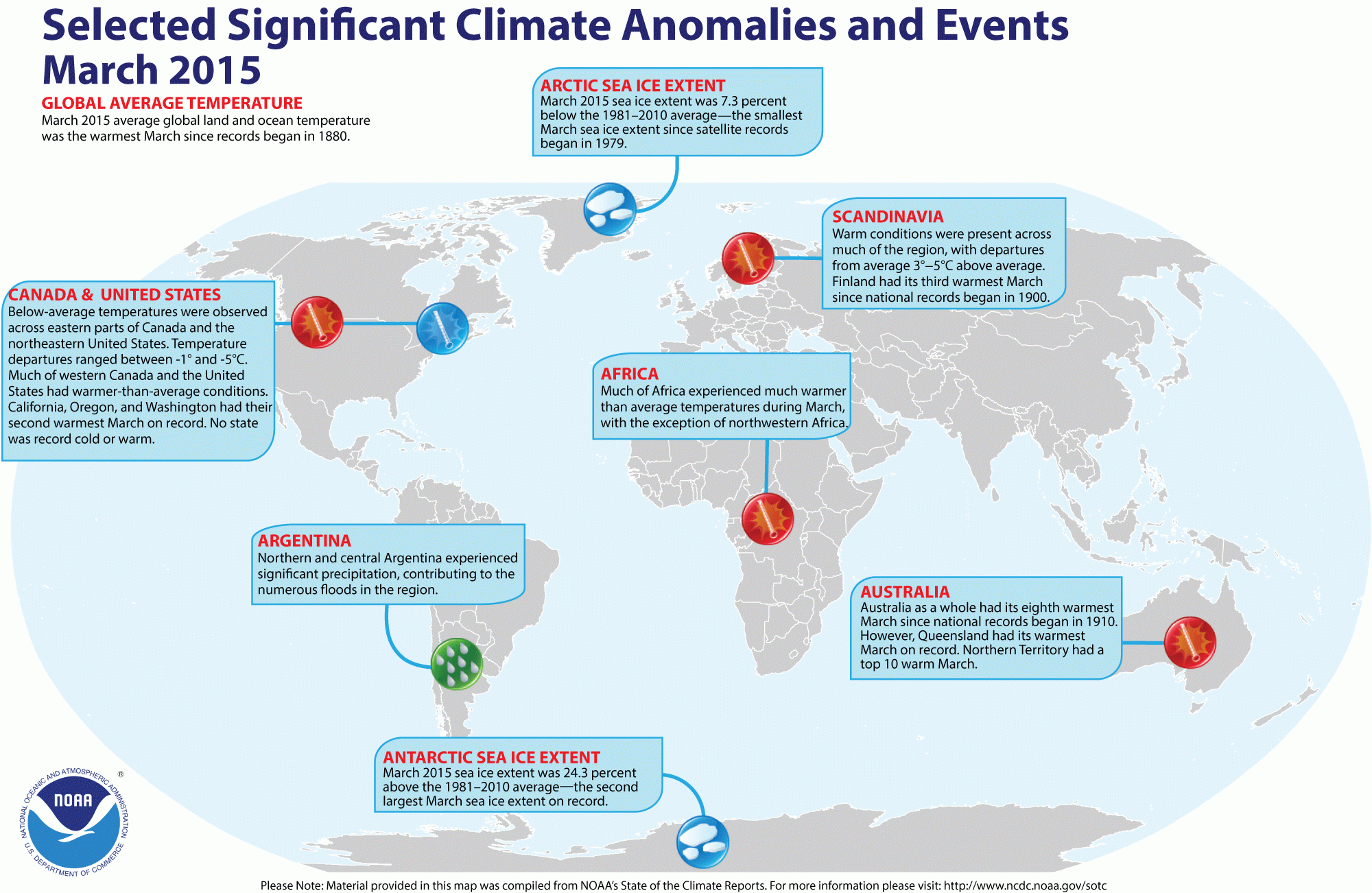Climate Change: March Temperatures Break Records; 2015 Hottest Year To Date

The year 2015 might be on track toward breaking last year’s notorious distinction of being the warmest year on record. According to three separate analyses released this week, the first three months of 2015 have been the warmest on record.
The U.S. National Oceanic and Atmospheric Administration (NOAA) released its global temperature analysis on Friday, which revealed that the first quarter of 2015 was the warmest such period on record across the globe’s land and ocean surfaces. With average temperatures of 1.48 degrees Fahrenheit above the twentieth century average, the readings broke the previous record of 2002 by 0.09 degrees Fahrenheit. For the oceans, the surface temperatures were 1.01 degrees Fahrenheit above average in the same period, making it third-highest reading in the 136-year period of record.
“Record warm temperatures continued to dominate in the northeast Pacific Ocean and were also notable in the southwest Pacific and parts of the Arctic Seas to the north and northwest of Scandinavia,” NOAA said in its report. “Overall, every major ocean basin had at least some areas with record warmth and large areas with much warmer-than-average temperatures.”

Moreover, March 2015 was ranked as the warmest March in NOAA’s 136-year archive. The global average temperatures for March 2015 were 1.53 degrees Fahrenheit higher than the twentieth century average of 54.9 degrees Fahrenheit.
Despite slight differences in the readings for March temperatures, the NOAA data was backed by the Japan Meteorological Agency and NASA’s Goddard Institute of Space Studies, both of which ranked 2015 as the hottest year to date. And, given that 2015 is an El Nino year, a further rise in ocean temperatures is expected.
“If El Nino continues throughout the summer and fall, as currently projected, and if the warm 'blob' remains in the northeast Pacific Ocean, as it has been for more than a year now, it seems quite likely that Earth will continue to see record or near-record high temperatures over the next several months,” Jessica Blunden, a climate scientist at NOAA, told Climate Central.

If 2015 does break last year’s record, it would mean that 15 of the hottest years on record have occurred in this century -- a telling sign of the effect anthropogenic climate change is having on global weather patterns.
“We expect that we are going to get more warm years, and just as with 2014, records will be broken increasingly in the future. But perhaps not every year,” Gavin Schmidt, who leads NASA’s Goddard Institute of Space Studies, reportedly said.
© Copyright IBTimes 2024. All rights reserved.












